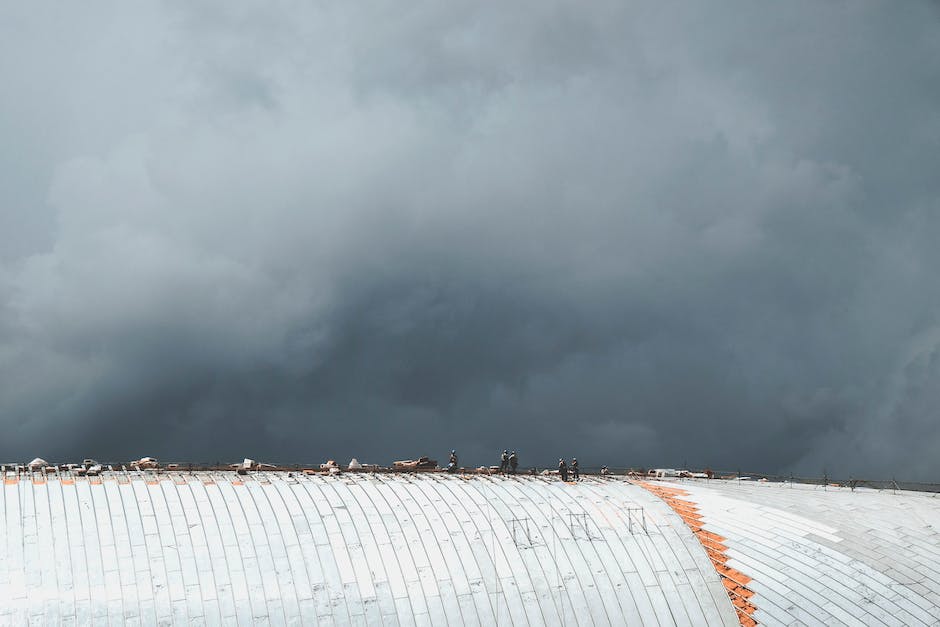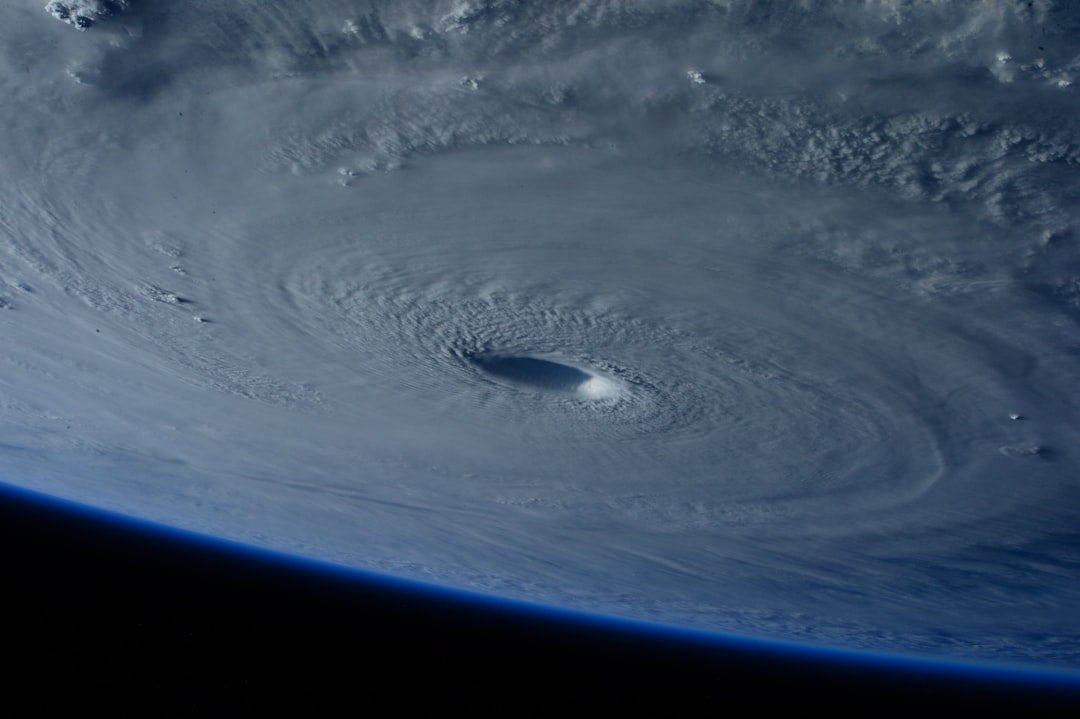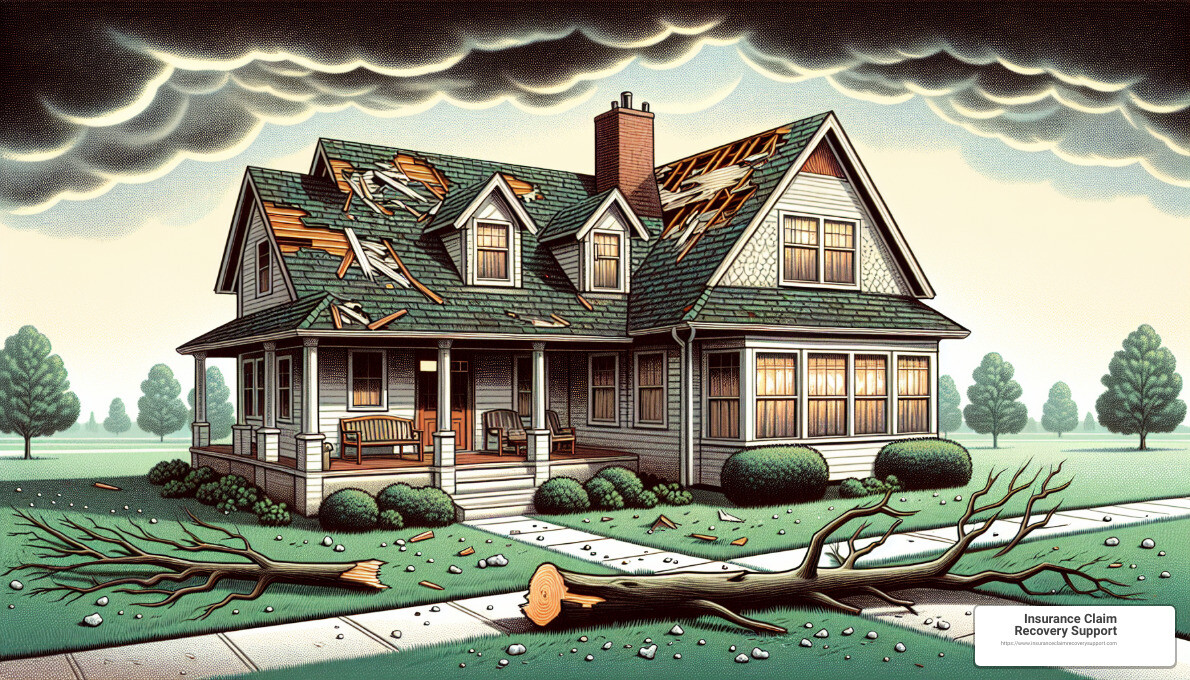Have you recently endured a storm that left your roof damage behind, leaving you grappling with the complexities of insurance claims? Dealing with roof storm damage insurance can indeed be a perplexing experience, especially when you’re left to decipher nuanced insurance terms while dealing with the stress of property damage. This confusion can lead to costly missteps, potential claim denials, and substantial out-of-pocket expenses. If this sounds familiar, you’re not alone. We at Insurance Claim Recovery Support resonate with your struggle and intend to guide you through the storm – quite literally.
Our focus is on elucidating the intricacies of filing roof storm damage insurance claims, thereby lightening the burden in your time of distress. We’ll be your reliable guides as we delve into understanding homeowners’ insurance, describing and identifying roof damage, decoding the language of insurance claims, and how to best navigate this process. We will discuss all the pertinent details you should arm yourself with in order to overcome this hurdle and claim the settlement you duly deserve.
For those seeking a quick understanding of ‘roof storm damage insurance,’ here’s a brief synopsis:
- It’s crucial to contact your insurance company as soon as you notice roof damage.
- An imperative part of this process is thorough documentation, which includes photographs and detailed notes about the damage.
- Professional inspection by a certified roof inspector is crucial to assess the extent of the damage.
- Familiarize yourself with the age of your roof, your deductible and the costs surrounding the repair or replacement when filing your claim.
- Be mindful of the fact that the insurance adjuster holds the authority to approve your claim and your claim can be denied on several grounds such as improper roof installation or inadequate maintenance.

Let’s embark on this journey together, and in the words of Benjamin Franklin “by failing to prepare, you are preparing to fail.” Preparation is key, and we are here to arm you with the knowledge and support you need to handle your roof storm damage insurance claim effectively.
Understanding Homeowners Insurance and Roof Damage Coverage
Homeowners insurance policies are designed to provide financial protection against damages to your home caused by unexpected events. Understanding what your policy covers is crucial, particularly when dealing with the aftermath of a storm.
What Does Homeowners Insurance Typically Cover?
Typically, homeowners insurance covers damage to your home’s structure and personal belongings resulting from certain perils. These usually include events like fires, windstorms, or hail. However, coverage varies depending on your specific policy and insurance provider. It’s essential to read your policy carefully to understand the extent of your coverage.
How Does Insurance Cover Roof Damage from Storms?
When a storm damages your roof, the dwelling coverage in your homeowners insurance policy comes into play. This coverage helps protect your home’s structure, including the roof, from specific causes of damage. If your roof needs repairs after being damaged by hail or a fallen tree during a windstorm, your dwelling coverage may help cover the cost.
The Role of Dwelling Coverage in Roof Damage
Dwelling coverage is a crucial part of your homeowners insurance policy. It helps pay for repairs or rebuilding if your home’s structure, including the roof, is damaged by a covered peril such as fire, wind, or hail. However, keep in mind that you’ll likely need to pay a deductible before your insurance helps to cover the cost of a damaged roof.
Personal Property Coverage and Roof Damage
If the contents of your home, like furniture or electronics, are damaged as a result of a covered roof claim, personal property coverage may help pay to repair or replace them. This coverage is typically included in standard homeowners insurance policies.
Other Structures Protection and Roof Damage
If you have unattached structures on your property, such as a shed or detached garage, and they’re damaged by a storm, your homeowners insurance policy may cover the repairs. This is usually covered under the ‘other structures protection’ part of your policy.
Understanding Deductibles and Coverage Limits
A deductible is the amount you pay out-of-pocket before your insurance kicks in. Coverage limits, on the other hand, are the maximum amount your insurer will pay for a covered loss. It’s important to understand both as they directly influence your out-of-pocket costs in case of a claim.
Exclusions for Windstorm and Hail Damage in Insurance Policies
While many homeowners insurance policies cover windstorm and hail damage, some might have exclusions. An exclusion is a specific situation or event that your policy doesn’t cover. If your policy has a windstorm or hail exclusion, any damage caused by these perils wouldn’t be covered. Always review your policy to understand any exclusions.
In conclusion, understanding your homeowners insurance coverage is fundamental when dealing with roof storm damage. At Insurance Claim Recovery Support, we’re here to help you navigate the complexities of your policy and ensure you receive the coverage you’re entitled to.
Identifying and Describing Roof Damage
When it comes to roof storm damage insurance claims, accurately identifying and describing the damage is vital. This information aids your insurance company in understanding the extent of damage and determining the amount of coverage you’re entitled to.
Common Signs of Roof Damage
Storms can wreak havoc on your roof, causing various types of damage. Some common signs of roof damage include:
- Damaged or Missing Shingles: Strong winds can cause shingles to curl, lift or blow off entirely, exposing the underlying roof layers to the elements.
- Water Leakage: If you notice water trickling into your attic or staining your ceiling, it’s a sign that your roof has been compromised.
- Damp Rafters: Moisture build-up or warping in your attic’s rafters indicates potential roof damage.
- Flashing Damage: High winds can damage the flashing around your home, particularly around chimneys, which are often stress points.
- Gutter Damage: Winds can also cause gutters to become clogged, loosen, dent, or even be blown away.
How to Describe Roof Damage to Your Insurance Company
When it’s time to file your roof storm damage insurance claim, clear and detailed communication is key. Describe each type of damage, its location, and how it happened. If possible, provide photos of the damage. If you’ve engaged a professional roof inspector, include their report in your claim documentation. Never admit fault or apologize as this could potentially reduce the compensation you receive.
The Impact of Roof Age and Condition on Insurance Claims
The age and condition of your roof can significantly impact your insurance claim. Older roofs or those in poor condition may receive less coverage or even be denied. Regular maintenance and early detection of damage can prevent these issues and prolong the life of your roof.
The Importance of Regular Roof Inspections
Routine roof inspections play a crucial role in maintaining your roof’s health and maximizing your insurance coverage. A professional inspection can detect early signs of damage, allowing you to address them before they escalate into significant issues. These inspections also provide valuable documentation of your roof’s condition that can be beneficial when filing a claim.
In conclusion, being proactive and knowledgeable about your roof’s condition is your best defense against storm damage and the insurance claim process. At Insurance Claim Recovery Support, we’re here to help you understand and navigate this process, advocating for your rights as a policyholder.
Filing a Roof Storm Damage Insurance Claim
Filing a roof storm damage insurance claim can be a complex process. Nevertheless, with proper guidance and understanding, you can effectively navigate this process and secure a fair settlement for your roof damage.
Documenting the Damage for Your Claim
The first step in the claim process is documenting the damage. Take clear pictures and videos of all noticeable or suspected roof damage. This visual evidence can be invaluable when submitting your claim to the insurance company. Additionally, keep track of any temporary repairs made to prevent further damage, as these costs might be covered in your claim. However, refrain from making any permanent repairs until an insurance adjuster has evaluated the damage, as this could jeopardize the payment of your claim.
Contacting Your Insurance Company and Scheduling an Inspection
After documenting the damage, contact your insurance company to report the damage and schedule an inspection. Be prompt in doing this; waiting too long could lead to your claim being denied. When scheduling the inspection, try to be present to point out all the damage and provide additional information that could be helpful.
Working with an Insurance Adjuster
An insurance adjuster will visit to assess the damage, verify it, and estimate the cost of repair or replacement. It’s crucial to be present during the assessment and share your documentation with the adjuster. This ensures a fair assessment and helps support your claim.
What Not to Say to a Home Insurance Adjuster
When dealing with an insurance adjuster, be careful with your words. Avoid admitting fault or using language that could be construed as apologetic or blameful. Even a slight admission of fault could reduce or eliminate the compensation available to you.
Dealing with Denied Claims
Unfortunately, not all insurance claims are approved on the first try. If your claim is denied, don’t panic. Understand the reason for denial, gather evidence to support your case, and submit a formal letter disputing the denial. In cases of denial due to improper roof installation or other reasons beyond your control, it might be necessary to seek legal advice or hire a public adjuster.
The Role of Public Adjusters in Insurance Claims
Public adjusters represent you, the policyholder, and not the insurance company. They can conduct their own assessment of the damage, help you understand your policy, and negotiate with the insurance company on your behalf. At Insurance Claim Recovery Support, we have a team of experienced public adjusters who can simplify the process and maximize your claim reimbursement.
In conclusion, while the process of filing a roof storm damage insurance claim might feel overwhelming, it doesn’t have to be. With proper documentation, open communication with your insurance company, and the assistance of a public adjuster, you can navigate this process effectively. And remember, we at Insurance Claim Recovery Support are here to help you every step of the way.
Preventing Roof Damage from Storms
Preventing roof damage from storms is a proactive approach that can save you the stress of dealing with insurance claims and ensure the longevity of your property. Here are some measures you can take to protect your roof from storm damage.
Choosing Durable and Resistant Roofing Materials
The type of roofing material can significantly affect your roof’s ability to withstand storm damage. For instance, metal roofing is known for its durability and resistance to high winds, making it a great choice if you live in a storm-prone area. On the other hand, asphalt shingles, while cost-effective, may not hold up well in severe storm conditions. Therefore, when considering a new roof or roof replacement, it’s important to consult with a professional roofing contractor who can provide expert advice based on local weather conditions and your home’s specific needs.
Installing Wind-Resistant Features
Wind-resistant features such as storm shutters can add an extra layer of protection to your home during high winds. Similarly, correctly installed and secured roof shingles can withstand wind speeds that a storm might bring. Additionally, ensuring your home’s structural elements are robust and well-maintained can also help minimize damage during a storm.
Regular Roof Maintenance and Inspections
Regular maintenance and inspections are key to preventing storm damage. By scheduling an annual roof inspection with a professional, you can detect potential issues early, preventing minor problems from becoming major ones. These inspections can identify loose or missing shingles, signs of water damage, and other early warning signs. Keeping your gutters clean and ensuring proper roof ventilation are also crucial in maintaining the health of your roof.
Preparing for Extreme Weather Events
When a storm is forecasted, taking a few extra steps can help minimize potential damage. Remove or anchor large objects like patio furniture and BBQ grills that could become airborne and damage your roof. Trim trees and remove any debris that could potentially damage your roof during a storm. Also, consider reinforcing your home with protective materials to provide additional protection.
In conclusion, while we can’t control the weather, we can control how well-prepared our homes are to withstand it. At Insurance Claim Recovery Support, we believe in being proactive and taking steps to prevent roof storm damage. However, should you find yourself needing to file a roof storm damage insurance claim, we’re here to assist you every step of the way.
Navigating Roof Storm Damage Insurance Claims in Texas
Texas has unique weather conditions, from hailstorms in Dallas to hurricanes in Houston, that can lead to a variety of roof damage. Understanding the nuances of these weather events and how they impact insurance claims is crucial for Texas homeowners.
Understanding Texas Fire and Storm Damage News
In Texas, cities like Lubbock and Waco face the additional challenge of wildfires, which can cause extensive property damage. Understanding the local weather patterns and the types of damage they can cause is vital to ensuring your insurance claim is comprehensive and accurate.
The Insurance Claim Process in Austin, Dallas, Fort Worth, San Antonio, Houston, Lubbock, San Angelo, Waco, Round Rock, Georgetown, and Lakeway
The process of filing a roof storm damage insurance claim in Texas involves several steps. It starts with immediate action right after the storm, such as taking measures to protect your property from further damage. This is often a requirement in homeowners’ insurance policies. Next, documenting the damage is crucial, including photographs and a log of all correspondence with the insurance company. This can be instrumental in case there are disputes later on.
One challenge that Texas homeowners face is that insurance companies might not always have your best interests in mind. They are businesses, and their goal is to minimize payouts. That’s where we, at Insurance Claim Recovery Support, step in. We serve as your advocate to insurance companies, ensuring you get what you rightfully deserve.
How Insurance Claim Recovery Support LLC Can Help
At Insurance Claim Recovery Support, we understand the unique challenges faced by Texas homeowners when dealing with roof storm damage insurance claims. We’re here to guide you through each step of the process, ensuring your claim is handled promptly and professionally. We fight for your rights to ensure you receive the compensation you deserve.
We have helped homeowners across Texas cities, from Austin to Houston, and from Dallas to San Antonio, navigate a wide range of claims and overcome various challenges. Whether it’s recovering a fair settlement after a hailstorm in Dallas or assisting a property owner who was initially denied coverage for hurricane-related roof damage in Houston, we’ve seen it all.
Our expert team of public adjusters effectively navigate the complexities of the claim process, ensuring that you achieve a fair and prompt settlement. If you’re facing a property damage claim in Texas and need expert assistance, you don’t have to do it alone. Whether you’re in Austin, Dallas, Fort Worth, San Antonio, Houston, Lubbock, San Angelo, Waco, Round Rock, Georgetown, or Lakeway, we’re here to provide professional assistance in handling your claim. Contact us today at Insurance Claim Recovery Support to schedule a complimentary insurance claim consultation.
Conclusion
Dealing with roof storm damage insurance claims isn’t a walk in the park. From identifying and documenting the damage to understanding the intricacies of your insurance policy, the process might be overwhelming. However, it’s essential to remember that you’re not alone in this. Guidance is available, and we at Insurance Claim Recovery Support are here to help.
Our experience and knowledge in the field allow us to assist you throughout the claim process, ensuring you receive a fair and prompt settlement. We take pride in helping property owners navigate the complexities of insurance claims, preventing unnecessary litigation or appraisal, and ensuring that they don’t face wrongful denial or underpayment.
It’s crucial to understand what your insurance policy covers, how to effectively document and describe the damage, and when to seek professional help. Also, regular roof maintenance and inspections can help prevent future damage, helping you avoid the hassle of filing claims frequently.
In the end, the goal is to get your property back to its pre-loss condition as quickly as possible. So, if you’ve experienced property damage due to a storm, don’t hesitate to reach out to us. We stand with Texas property owners in their journey to recovery, providing exceptional service and uncompromising support.
In conclusion, dealing with roof storm damage insurance claims might be challenging, but with the right knowledge, support, and assistance, it’s manageable. The road to recovery might be long, but rest assured, we’ll be with you every step of the way. Contact us today at Insurance Claim Recovery Support for a complimentary insurance claim consultation.









